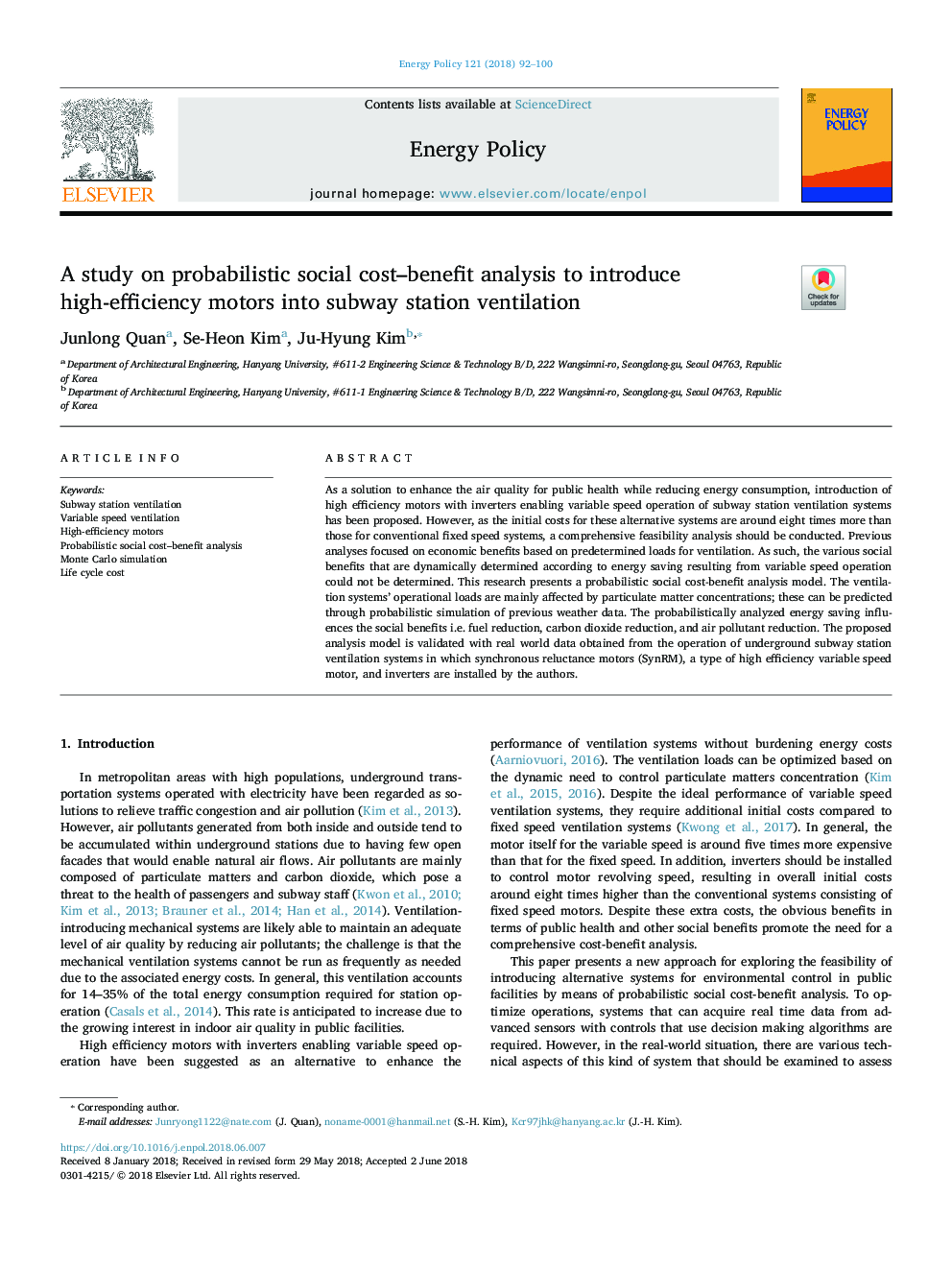| Article ID | Journal | Published Year | Pages | File Type |
|---|---|---|---|---|
| 7396518 | Energy Policy | 2018 | 9 Pages |
Abstract
As a solution to enhance the air quality for public health while reducing energy consumption, introduction of high efficiency motors with inverters enabling variable speed operation of subway station ventilation systems has been proposed. However, as the initial costs for these alternative systems are around eight times more than those for conventional fixed speed systems, a comprehensive feasibility analysis should be conducted. Previous analyses focused on economic benefits based on predetermined loads for ventilation. As such, the various social benefits that are dynamically determined according to energy saving resulting from variable speed operation could not be determined. This research presents a probabilistic social cost-benefit analysis model. The ventilation systems' operational loads are mainly affected by particulate matter concentrations; these can be predicted through probabilistic simulation of previous weather data. The probabilistically analyzed energy saving influences the social benefits i.e. fuel reduction, carbon dioxide reduction, and air pollutant reduction. The proposed analysis model is validated with real world data obtained from the operation of underground subway station ventilation systems in which synchronous reluctance motors (SynRM), a type of high efficiency variable speed motor, and inverters are installed by the authors.
Related Topics
Physical Sciences and Engineering
Energy
Energy Engineering and Power Technology
Authors
Junlong Quan, Se-Heon Kim, Ju-Hyung Kim,
